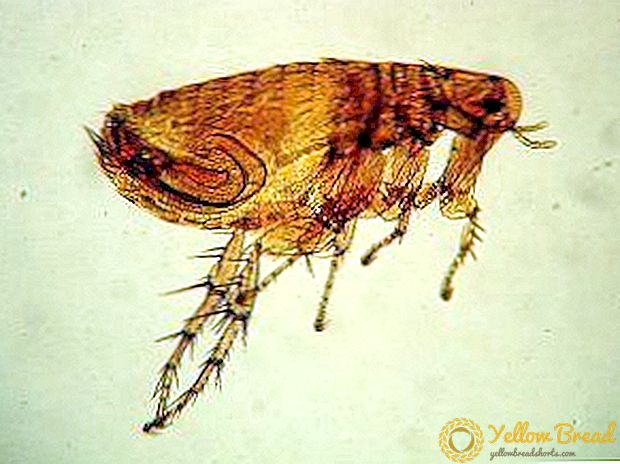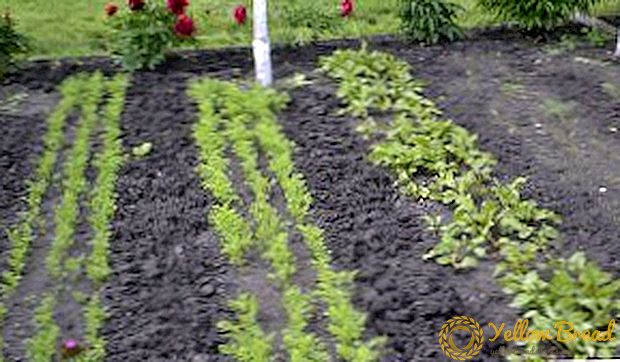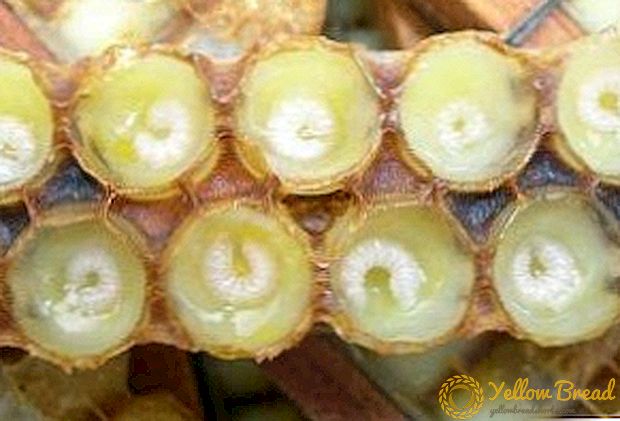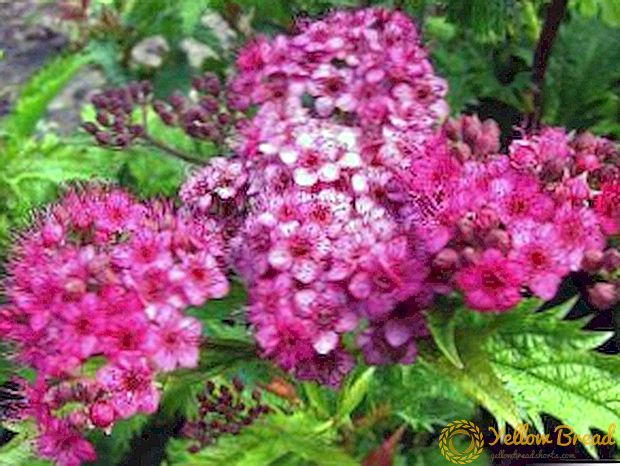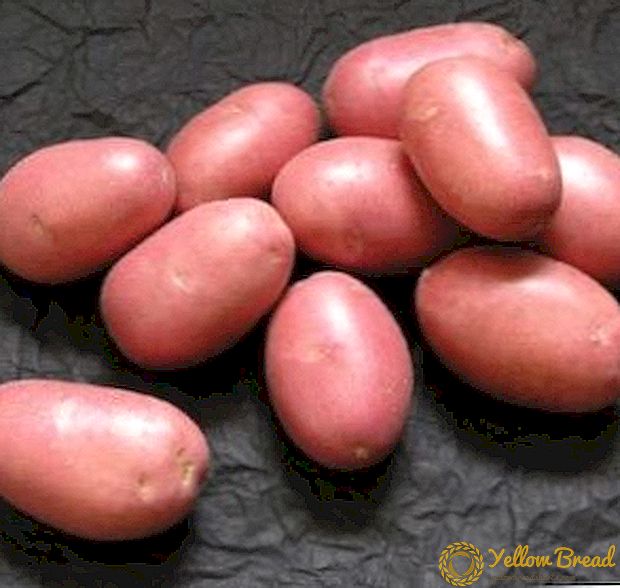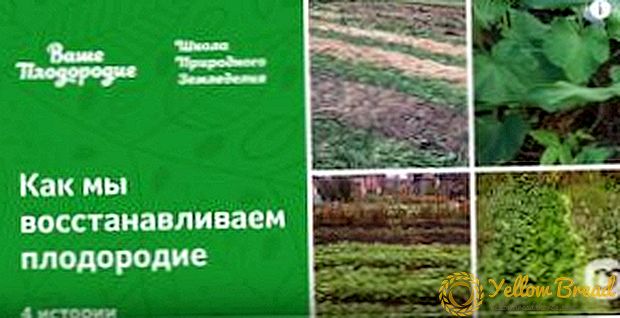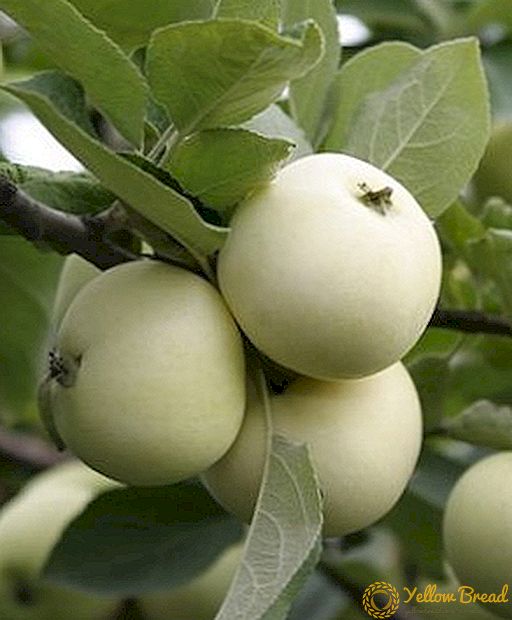 One of the most famous English sayings is: "One apple a day - the doctor away."
One of the most famous English sayings is: "One apple a day - the doctor away."
Indeed, these fruits are very rich in vitamins and microelements, and therefore are regularly present in our diet, including in the diet.
Apple trees can be found in almost every garden. At the moment, a huge number of varieties of these fruit trees have been developed, which differ in many criteria: in size, ripening, in terms of planting and care, but all of them are united by one positive feature - delicious and extremely healthy fruits.
An excellent option for planting in the summer cottage is a dwarf apple tree "Jung", which is popularly called "Snow White". According to the description, the tree of this variety is unpretentious and at the same time it bears fruit well and stably.
- Breeding history
- Tree description
- Fruit Description
- Lighting Requirements
- Soil requirements
- Pollination
- Fruiting
- Gestation period
- Yield
- Transportability and storage
- Disease and Pest Resistance
- Frost resistance
- Use of fruits
- Advantages and disadvantages
- pros
- Minuses
Breeding history
The semi-cultural variety was bred in Altai. In the process of breeding crossed the "White filling" and "Invincible Grell". In 2001, it began to experience, and in 2004 - to actively apply.
At the moment, thanks to numerous positive characteristics, these apple trees have gained a crazy popularity.
Tree description
This small tree reaches a height of 1.5-2 m in adulthood. Its fairly powerful branches are located at a right angle relative to the table, and the crown is spreading and lush. The bark is colored brown.  Shoots, mostly straight, with a fleecy texture. Leaf plate - concave, the surface of the foliage is smooth and glossy with slightly noticeable pubescence.
Shoots, mostly straight, with a fleecy texture. Leaf plate - concave, the surface of the foliage is smooth and glossy with slightly noticeable pubescence.
Fruit Description
Fruits are tied on simple and complex annuli. Their weight varies from 50 to 80 g. Round apples are covered with a thin skin, on which there is a wax coating.
The fruits are very similar to one of their parents - "White filling", painted in a light yellow color. On the other side, where the sun's rays hit the fruit, a pink blush is formed.  Fruits fasten on a long, thin stalk. The taste qualities of apples are assessed as very good, they are fine-grained in consistency, very juicy and loose. The color of the pulp is white, sometimes with a cream shade. The fruit is sweet and sour.
Fruits fasten on a long, thin stalk. The taste qualities of apples are assessed as very good, they are fine-grained in consistency, very juicy and loose. The color of the pulp is white, sometimes with a cream shade. The fruit is sweet and sour.
Lighting Requirements
Apple trees of "Young" are very fond of the light, but at the same time they can remain productive in the shaded areas. It is best to plant a tree on high ground, but be sure to protect the young plant from wind and draft.
Soil requirements
Fertile soil is best suited for this variety. Before planting, it is desirable to add organic fertilizers to the soil, it may be rotted manure or compost. It is recommended to plant seedlings in early spring.

Pollination
"Young" refers to self-bearing plants, but the presence on the site of 3-4 other varieties is welcome and significantly increases the yield of the tree.
Fruiting
Apple tree begins to fructify for 4 year after planting, but there are cases when the crop appears only for 5 year.
Gestation period
Ripe apples can be removed in mid-August. But, depending on climatic and weather conditions, fruit ripening may occur later for a couple of weeks, that is, by the end of the last summer month.
Yield
The young tree brings 10-15 kg of fruit. Approximately 10 years after planting, the yield increases to 25-30 kg. 
Transportability and storage
Apples of this variety are poorly and briefly stored, a maximum of 30 days. Due to poor keeping capacity, transporting them over long distances is unprofitable.
Disease and Pest Resistance
The apple tree is highly resistant to scab and other diseases.If you carry out mandatory preventive measures to prevent pests, then the likelihood that they will appear on the tree is minimal.
Such procedures include whitewashing trunks, picking apples and fallen leaves in the fall, as well as spraying the tree with special preparations during the flowering and fruit ovary. 
Frost resistance
Frost resistance varieties "Young" is estimated as average. At too low temperatures, individual parts of the tree may freeze over, but experienced gardeners emphasize that the plant is quickly restored after that.
In order to protect the root system of the apple tree, it is necessary to mulch the earth around it in late autumn.
Use of fruits
You should not be upset because apples are poorly stored fresh, because of them you can always make excellent juices and mashed potatoes. They are also used to make compotes, jams, jam and jam.

Advantages and disadvantages
Like any other plant, apple "Jung" have their own advantages and disadvantages.
pros
- Good yield.
- High resistance to scab and other diseases.
- Large and beautiful fruits.
- The plant normally tolerates even severe frosts.
- Excellent taste of fruit.
- The versatility of the fruit.
Minuses
- Apples are poorly stored fresh.
- The proximity of groundwater is not tolerated, landing in such places is excluded.
- Trees of this variety do not tolerate drought.
Apple trees "Young" or as they are called "Snow White" are perfect for planting in the garden. Due to the fact that the plant belongs to the semi-cultural, it is rarely grown on an industrial scale.  Caring for such a fruit tree does not take much time and effort, and is subservient to even a novice gardener.
Caring for such a fruit tree does not take much time and effort, and is subservient to even a novice gardener.

